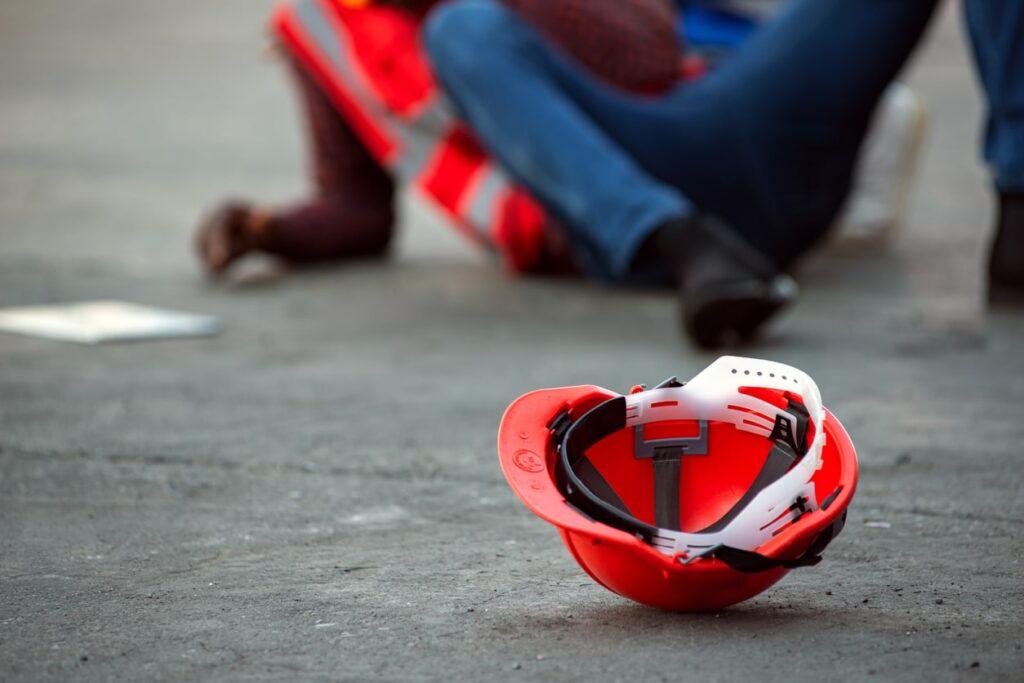- News
- Winter is Coming… Deadly Slip-and-Fall Accidents Aren’t Far Behind
Winter is Coming… Deadly Slip-and-Fall Accidents Aren’t Far Behind

The leaves are still on the trees and many balmy days are yet to come this year, so it might seem just a bit too early to be talking about one of the many hazards of Michigan’s famed “winter wonderland.” But it’s important to know that slip-and-fall accidents – while perhaps more frequent once snow flies – aren’t limited only to the winter months.
In fact, this commonplace yet highly dangerous mishap results in around a million emergency room visits annually across the country. The National Council on Aging (NCOA) reports that falls are the number one cause of death and non-fatal injuries to older people. In fact, the NCOA says a quarter of Americans over age 65 fall every year, breaking bones and suffering life-threatening injuries in the process. And it’s important to note that young children are also highly vulnerable to this type of incident. What’s more, slip-and-fall injuries are America’s leading reason for lost workdays according to the National Floor Safety Institute.
Knowing all this, Michigan businesses and property owners have a legal responsibility to do their part in maintaining safe surroundings to help prevent slip-and-fall accidents from occurring on their premises. Not only that, but all Michigan residents should be aware that a precedent-setting Michigan Supreme Court decision we discussed here last month makes it far more likely to be financially compensated for injuries caused by the negligence of land possessors, property owners, and businesses statewide.
How Is Slip-and-Fall Accident Negligence Determined?
As we recently explained, this type of injury falls under a broad category called “premises liability” whereby property owners are responsible for ensuring the safety of tenants, customers, visitors, employees, and others who might set foot in their places of business, rental properties, or other facilities. To quickly recap that discussion, we should explain that negligence in this type of case is legally determined by proving four elements: duty, breach, causation, and damages. Briefly, property owners have a duty to provide safe surroundings for everyone who might be present there. If they fail in this duty, they have caused a breach for which they can be held legally liable. It’s up to the plaintiffs and their personal injury attorneys to prove causation – meaning that they must show that the property owner was more than 50 percent responsible for the injuries someone has suffered due to their actions (or in some cases lack of actions). And finally, there must have been damages or harm to the injured party resulting in such issues as loss of wages, medical bills, rehabilitation costs, pain and suffering, disability, or even wrongful death.
The state Supreme Court’s July decision – a 107-page document you can read for yourself on some snowy winter weekend – overturned what has long been called the “open and obvious” precedent, and has instead requires future slip-and-fall cases to be decided using a comparative fault framework. Basically, that means juries will be asked to decide who is most responsible for slip-and-fall injuries – the plaintiff or the defendant. If one or the other is determined to be more than 50 percent to blame for what happened, the case will be decided in favor of the less guilty party.
That all means not every slip-and-fall accident will result in an actionable court case resulting in an injured person receiving compensation. There may be incidents, for example, where an individual who gets hurt was more than 50 percent responsible for their own injuries. For instance, a shop owner could have diligently applied salt to melt black ice around the building entrance and even placed hazard warning cones or signs in the area to warn pedestrians of the potential danger. If a customer who isn’t paying attention trips over an orange cone and is hurt, a jury might decide that the owner had acted in a highly responsible fashion, and that the injured person was mostly to blame for the accident. In such a situation, if you were that person who was found to more than 50 percent accountable for what happened, you’d be prevented from receiving damages for pain and suffering under the state’s comparative fault rules – which is what the Supreme Court decided last month.
Essentially, this means that judges and juries will be asked to examine every future premises liability case individually, and defendants will bear a large burden of proof to show that they took necessary steps to protect customers, employees, visitors, or anyone else who had the right to be on the premises from experiencing harm on their property. At the same time, plaintiffs will have to demonstrate they took reasonable care to avoid being hurt by, for example, avoiding icy patches on sidewalks or stepping around gaping potholes in parking lots. By the way, the level of responsibility that property owners must have for the safety of others isn’t limited only to slip-and-fall accidents. Possible premises liability negligence injuries can result from a wide range of hazards in places ranging from swimming pools to parking garages, plus many more spots and circumstances we’ve outlined here.
Some Valuable Advice to Help Businesses Avoid Lawsuits …
Needless to say, much of what we recommend is fairly easy and should actually be a regular part of business operations. Simply put, if you run a business or organization where people come to your location for any reason – as employees, as customers, or simply as visitors (legally these people are classified as trespassers, licensees, and invitees depending on the property/business type and the individual’s reasons for being on the premises)– properly maintain your facility. Keep parking lots and building entrances in good condition. Remove ice and snow as quickly as possible. Provide safe surroundings for workers. Install cameras to monitor working conditions and to provide evidence that you can use to help prove adequate safety protocols were in place in the event someone is injured. And never erase video footage – because you don’t ever want to be accused of tampering with or destroying evidence.
Additionally, adhere to Occupational Health and Safety Administration (OSHA) rules and promptly act upon the results of safety inspections. Keep good records to prove equipment is maintained properly and inspected regularly. Depending the size and nature of your organization, consider hiring a safety officer and give that employee the actual scope and authority to do his or her job appropriately. Obtain adequate liability insurance protection to safeguard your business from devastating losses that can result from liability and negligence lawsuits.
… and Some Recommendations for Individuals and Employees to Stay Safe
Be smart and use common sense. Watch where you’re going. For instance, don’t have your eyes glued to your cell phone when you’re on a sidewalk, in a parking lot, or walking through a crowded store. Wear good shoes with plenty of tread. When it’s snowing, expect that there will be ice, be cautious walking in areas where it’s likely to be slippery, and avoid places where the sun hasn’t yet had the chance to melt black ice (or where downspouts have directed melting water that might have refrozen overnight).
If you need to wear glasses or contact lenses to improve your vision, wear them. If you hear better with hearing aids, use them. Keep hold of railings and handrails whenever possible on stairs and escalators. If you’re taking a medication that affects your balance or impairs your eyesight, wait until it wears off before leaving your home. The National Institute on Aging offers a variety of other tips for older Americans to help them prevent falls and to minimize injuries if they do lose their balance and take an unexpected turn.
Safety measures can help protect you from getting hurt at work, too. If you have a job that demands it, wear steel-toed footwear and use other personal protective equipment provided by your employer. If your organization doesn’t offer adequate safety supplies, or you feel your working conditions are unsafe for any reason, document that situation with your supervisor in writing, let your shop steward or other employee representative know, and make notes on when you did so to help prove breach and causation as we’ve already described.
Finally, if you’re ever hurt in a slip-and-fall incident or for some other reason caused by the negligence of a business, an employer, or a property owner, take pictures or shoot video (or ask someone else you trust to do so) to document the conditions that led to your injury. Be sure that time coding and location tracking are turned on if using a smartphone camera. (Here are instructions for doing that with Android and iPhone models.) Keep track of any and all expenses you’ve had to pay because of your injury. Document anything that you think might be important for us to know to help you prove your case. In accidents of this nature, where ice can melt or spilled liquids can be quickly mopped away or cleaned up, it’s crucial to gather and preserve as much evidence as possible to clearly demonstrate that you were not responsible for what took place.
Some Final Advice…
As you can probably imagine, we’re regularly contacted by people who’ve been injured in slip-and-fall situations or other circumstances where premises liability laws come into play. That’s why we have a dedicated team of premises liability attorneys who know their way around a courtroom, and have years of experience litigating on behalf of Michiganders whose injuries experienced on someone else’s property have resulted in job loss, disability, astronomical medical expenses, and ongoing pain and suffering no one should ever have to feel. So, here’s our advice to you: if you’re ever hurt, dial 855-MIKE-WINS (855-645-3946) and get us working on your case right away. The sooner you do, the faster we can begin to document your situation, gather essential evidence, and do everything else in our power to get you fair compensation for your injuries. It costs you nothing – and you have everything to gain.

Content checked by Mike Morse, personal injury attorney with Mike Morse Injury Law Firm. Mike Morse is the founder of Mike Morse Law Firm, the largest personal injury law firm in Michigan. Since being founded in 1995, Mike Morse Law Firm has grown to over 200 employees, served 40,000 clients, and collected more than $1.5 billion for victims of auto, truck and motorcycle accidents. The main office is in Southfield, MI but you can also find us in Detroit, Sterling Heights and many other locations.








